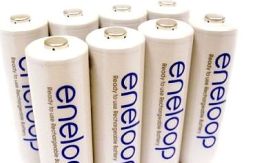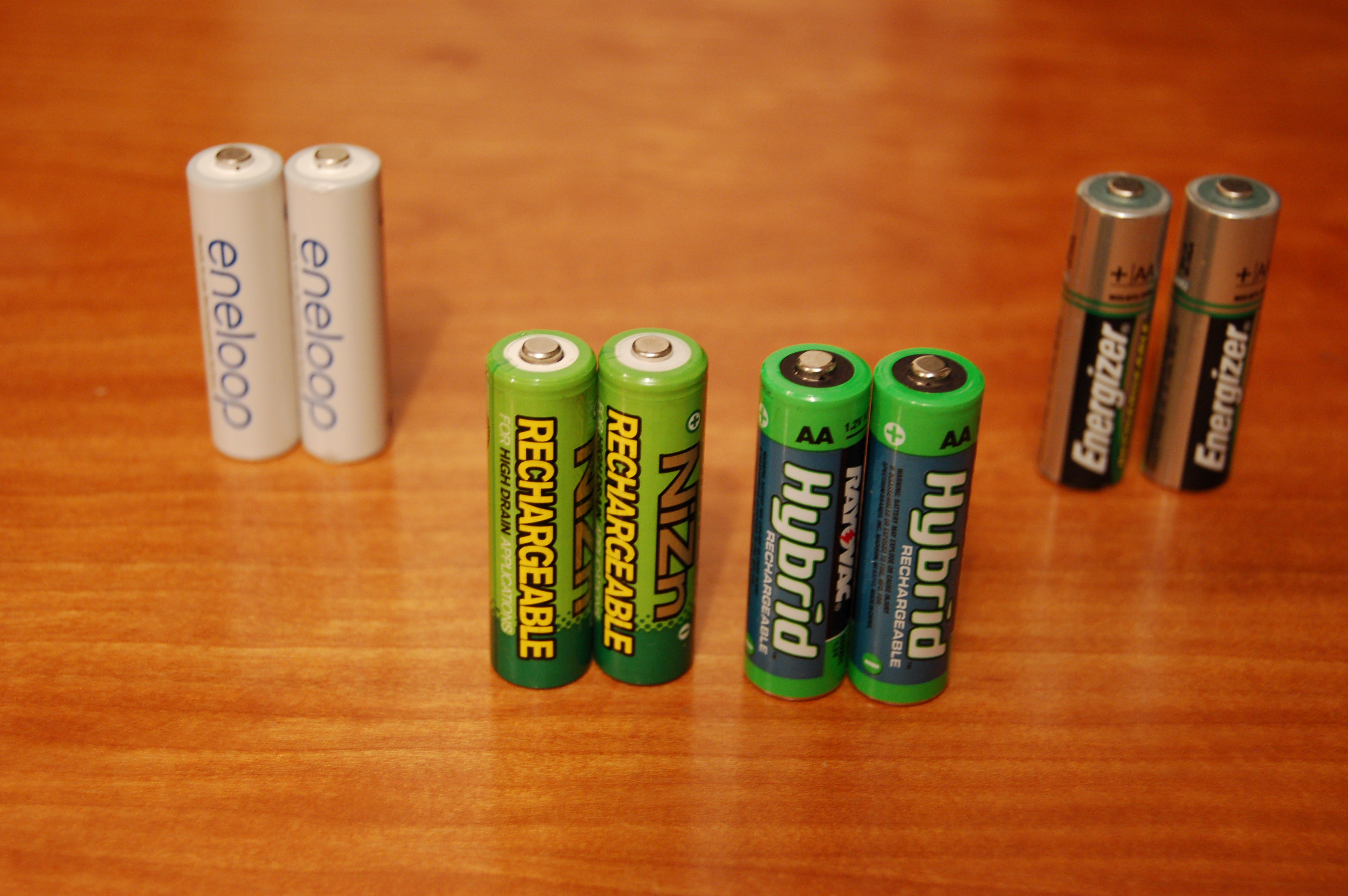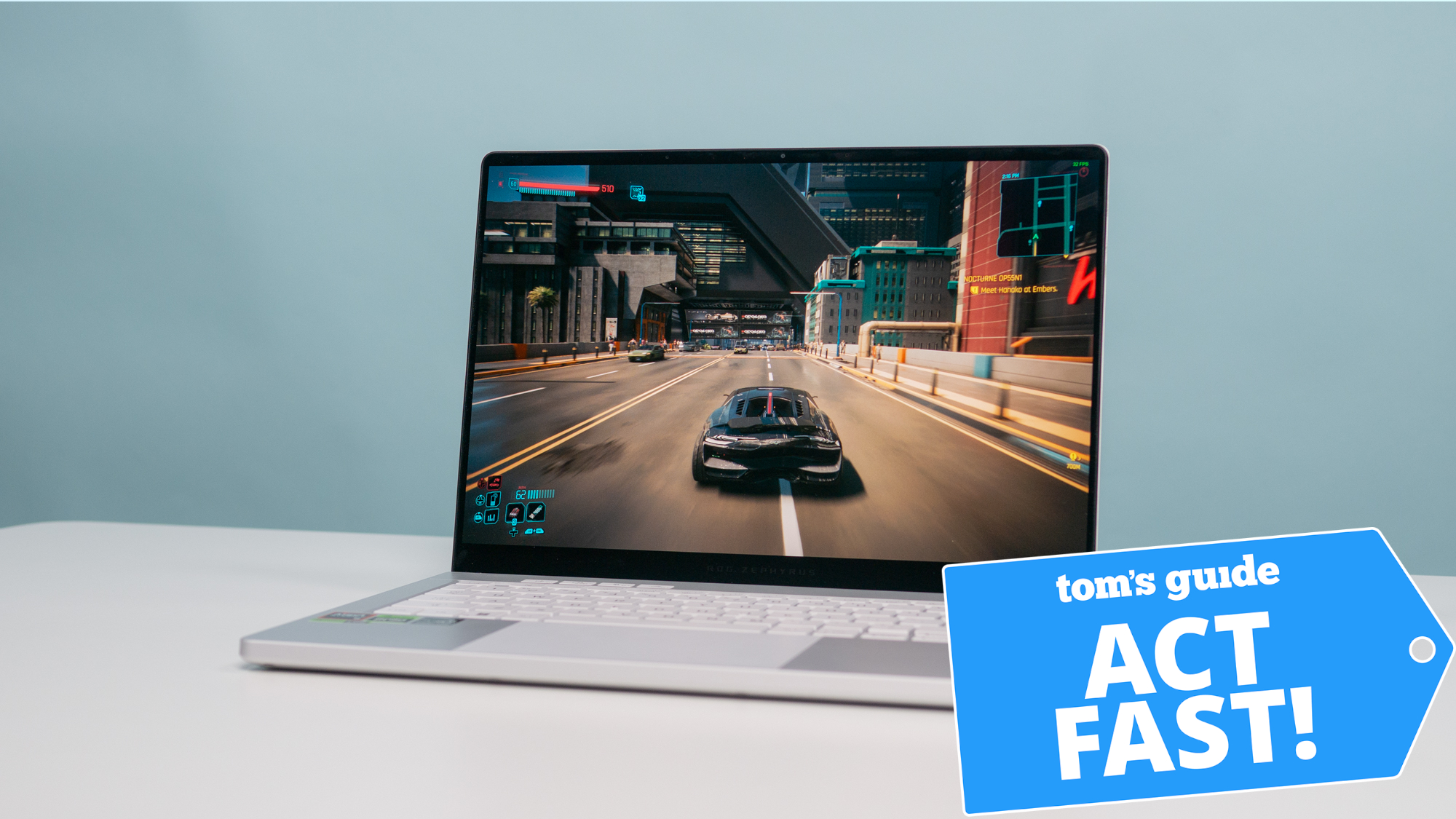Rechargeable Batteries Test
Makers of rechargeable batteries are vying to help stop you from tossing dead batteries. Which is brand and technology is the best?

Green Power-Up
How many batteries do you and your family use and throw away? According to the Environmental Protection Agency , Americans buy 3 million gadget batteries per year—and the average person tosses more than eight of them. If you’re in a family of gadget fans like my family, you probably use more. At times, I think we consume more batteries than food. But recently, we stopped throwing batteries away.
Instead of buying disposable batteries that can be used only once before disposal, we’re now using rechargeable cells that can be topped off and reused hundreds of times. Every time I recharge them, it means fewer batteries end up sitting in landfills.
This decision wasn’t just a green one. Though there’s a hefty upfront investment for rechargeables, it does make sense economically. With a four-pack of rechargeable AA batteries including the charger selling for around $30, the rechargeable system pays for itself quickly.
You will probably break even after roughly four months of use if you recharge a pair of AAs every week. I don’t know about you, but between remote controls, music players, and flashlights we use much more than that in a week at my house.
But even the rechargeables won’t last forever. Most rechargeable batteries can be renewed somewhere between 300 and 1,000 times, depending on the chemicals used to store the electricity. That amounts to many years of weekly use.
Don’t worry about the effect of the battery charger on your electric bill . Most chargers use just a few watts – less electricity than a child’s night light. Worst case scenario: weekly charging could add up to 13 cents a year to your bill.
That power has to come from somewhere, and in the U.S., chances are that your local power station is burning coal or natural gas to generate the electricity that contributes to global warming. All told, sustainability non-profit organization Cleaner and Greener estimates that amount of power equals about 2 pounds of carbon dioxide released into the atmosphere per year. As far as greenhouse gases go, this is much less of a cost to the environment than the dumping of 100 more pairs of disposable AA batteries would be.
Sign up to get the BEST of Tom's Guide direct to your inbox.
Get instant access to breaking news, the hottest reviews, great deals and helpful tips.

Over the past few weeks, I’ve used four sets of rechargeable AA batteries and their chargers (from Energizer, Rayvac, PowerGenix and Sanyo). These are the newest four rechargeable battery models on the market, all released within the last six months. I tested them in every product I could, from a TV remote control, to an alarm clock.
To see how these different brands shape up, I gave each a hard workout that included using a CD player and flashlight. For comparison, I repeated these tests with fresh disposable Duracell batteries (link to testing page).
While disposable AA batteries are rated to supply 1.5 volts, they generally deliver 1.6 volts when new. By contrast, most rechargeable cells create about 1.4 volts when fully charged. That number decreases slowly as the power drains out of the cells, and most devices designed to run on a pair of AA batteries stop working at about 1.2 volts.
There is an exception to that rule in this roundup: PowerGenix’s NiZn cells start out at nearly 1.8 volts, which is good and bad. These batteries lasted the longest, outpacing both disposable and rechargeable cells. But, for some uses they’re too much. They actually managed to burn out two flashlight bulbs after only about 10 minutes of use.
Bottom line: Rechargeables are green, in more ways than one. They can help the environment by preventing the disposal of harmful batteries in landfills, and save you hundreds of dollars a year. If there are compelling reasons not to use the latest rechargeable batteries, we’d like to hear them.
Brian Nadel is a freelance writer and editor who specializes in technology reporting and reviewing. He works out of the suburban New York City area and has covered topics from nuclear power plants and Wi-Fi routers to cars and tablets. The former editor-in-chief of Mobile Computing and Communications, Nadel is the recipient of the TransPacific Writing Award.
-
It's worth noting that Kill-A-Watt type meters may not give reliable numbers at extremely low power consumptions.Reply
After some extensive testing that I looked at from my work I went with PowerEx batteries for myself. They've got a 2700 mAh capacity, and they held up at high current (> 10A). They weren't the cheapest ($19/4 pcs)
It's also worth noting that NiMH batteries all have the same chemistry, and can be charged by a standard NiMH charger. -
How does this article not point out the BIG difference between the regular nimh batteries and the new hybrid cells? The hybrid batteries, like the eneloop, will hold their charge when not in use. Regular nimh batteries will lost their charge quickly, even when not in use ( this is what allows them to ship the hybrid batteries pre-charged ).Reply
-
does anyone know if the chargers can be mixed-and-matched? I used a set of the rayovacs for a year with my digital camera, and they no longer work well. I am going to get eneloops now -- can I use my old rayovac charger?Reply
-
Shadow703793 benbagginsdoes anyone know if the chargers can be mixed-and-matched? I used a set of the rayovacs for a year with my digital camera, and they no longer work well. I am going to get eneloops now -- can I use my old rayovac charger?Generally, you can do it. I'v been using an Energizer recharger on my Sanyo's.Reply
Just a little tip: Keep an eye out on Amazon deals for Sanyo rechargeable. I got a 48 pack for under $20 during a sale (with out charger). -
I forget the total price for my Eneloop's but it was under $40 for four AA's, Four AAA's, a charger, and both a C and D converter at Costco.Reply
They last ten times longer in my Digital Camera Compared to Disposables.
They are the best. -
cadder There are a lot of differences from battery to battery.Reply
First the technology. Throw-away Alkalines have good capacity, reasonably good shelf life, and good voltage to start with but their voltage goes down a lot as they are used which is what causes flashlights to start going orange and dim after you use them a little while. NiMH and NiCad will usually maintain their voltage a little better until the end. LiIon is the best here but I don't think you can buy LiIon rechargeables in AA size. Also Alkalines don't work very well when cold, and their voltage will drop a lot under real heavy load. NiMh will maintain higher voltage and put out more current at the same time.
Different brands of NiMh have different capacity ratings, in milli-amp hour (mAH), and even at the same capacity they will vary in actual use just like these tests showed. NiCad is the worst for self-discharge, but NiMh is not too bad. They will work OK for devices that you use reasonably frequently but not for a flashlight that you put in the closet and use once a year. Alkalines will work better for this, but if you leave the device for several years then when you get ready to use it the batteries might have leaked and ruined the device. Use Lithium throwaways for this.
I haven't used the NiZn. I wonder what their voltage characteristics are under load.
NiCad and NiMh usually require different chargers but some chargers have a switch for this. I don't know if the NiMh and newer NiMh can use the same charger. Unfortunately the good battery chargers can be pretty expensive. Slow chargers tend to be the cheapest but a good fast charger can be a lot more convenient. -
kravmaga Something the review also omitted is that eneloops are known for exceptional performance retention after 500+ cycles of use whereas some other competing low self-discharge cells will degrade much faster.Reply
I have also heard of nutty people discharging them at more than 12C inside home-built portable aircraft landing lights with no damage where cheaper cells literally melted down. -
NewJohnny I'm the guy adding +1 to all the eneloop comments, for good reason. These are almost perfect batteries. True, the voltage is a little lower, but like mustang1068 pointed out, they retain a charge of 80% after 12 months of no use. I have them in all the game console controllers and kids toys.Reply -
starryman Hey great article minus the missing conclusion... I have both the Sanyo Eneloop and the Energizer rechargeable batteries with real world use for over a year. The Energizers are a pure waste of money. I bought 5 packs of 4 packs of the Energizers and have two of the chargers. After 3 months of use 6 of them stopped charging. Then 6 months later about half of them burned out. I noticed the Energizer batteries get realllllly hot when charging. The battery life on them drop significantly after 20-30 charges. The fast charging seems to kill them. The Eneloop batteries still work but the discharge rate sucks. I have a Canon 480EX camera flash and the Eneloops can't keep up. After 4 successive shots, it pauses for about 4 seconds. The Energizers can push out 9 successive shots before a pause but only good for maybe 60 shots and discharges to 20% if not used. Regular Alkaline batteries will give me 14 successive shots and give about 200 flash shots. Plus I can have them in the flash for months without worrying about them discharging to nothing. So at this point both the Eneloop and Energizers just sit in a tub and everyone once in awhile I have to pull out an Energizer that begins to corrode. At this point I've gone back to Alkaline batteries at Costco which is 48 AA for about $12. With Alkalines they have the perfect balance of longevity, discharge, and cost. I may try out the PowerGenix NiZn though... I just worry that it may toast my $400 camera flash.Reply

